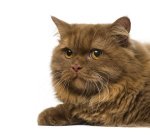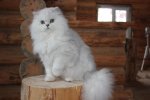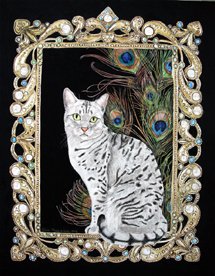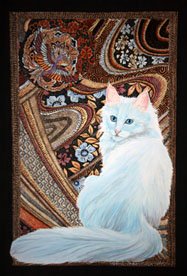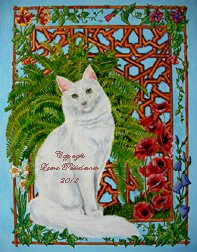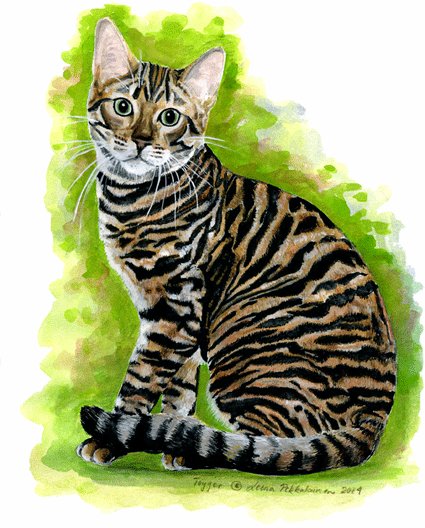Cat Diarrhea Treatment
The best cat diarrhea treatment is prevention. If you notice any symptoms of diarrhea in your cat, act quickly. If you do so, in all likelihood your cat will feel better faster – and the amount of vet fees will be lower.
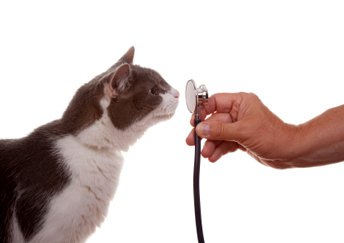 |
Do NOT give your cat human or dog medication – these can be downright deadly to a cat. Don’t’ use over-the-counter medications as feline diarrhea treatment neither, not without veterinary consultation. |
One visit to the vet may not be enough, and this is no reason to distrust your vet and run to another the next day. Only if you seriously doubt your vet’s capability to treat your cat, seek another advice.
|
In cat diarrhea treatment, take very good care of hygiene. Use gloves when you handle the feces, because it may contain parasites that can transfer to people too. Wash your hands every time you have touched your cat. An important part of cat diarrhea treatment is disinfecting the litter box, and changing and washing the bedding frequently. Also don’t forget cleaning the food bowl every time the cat has eaten. This is not only to stop the diarrhea from spreading, but also because while the cat has diarrhea, its immune system is weakened and keeping it in as clean an environment as possible promotes its healing. |
When you clean the litter box (using rubber gloves, of course), do not do it in your bathtub (or sink). Make sure no water is left lying around, and that it all goes down the toilet. Use the hottest water you can, and use bleach too. But remember that heated bleach may give toxic fumes you should not breathe. So first wash with hot water, then use bleach. Then rinse with water. Do not mix hot water and bleach.
Keep your cat isolated and indoors as long as it takes to be sure you are not dealing with an infection. This way the cat won’t pass its illness to other cats. Also be sure your children cannot touch the cat. In the room where you keep the cat, there should be no carpets for the obvious reason. The cat should have access to water (check from your vet how often the cat should drink), and of course to a litter box. (It is good to have an extra litter box just in case you have more than one cat and one of them needs to be separated from the others.) It may also help, if you get a litter box that cleans itself. (But even these need to be disinfected).
If you need to give liquid medication to the cat as part of cat diarrhea treatment, get a special syringe for this purpose (you will probably get one from your vet), and a towel and give the medication in a bathroom. You might have another syringe for room-temperature water which you can use after the actual medication is given. This may wash away the bad taste of the medicine. Also ask beforehand how long the medication should take to take effect – it may take a little while, so don’t expect immediate results.
Cat Diarrhea Treatment
the Quiet Diet
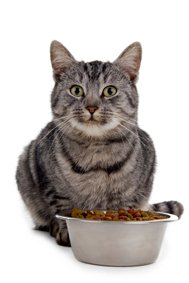 |
In cases of minor diarrhea, a simple diet may be enough of a cat diarrhea treatment, especially if the cat has no frequent history of diarrheas. This means giving the cat food that is easily digestible in order to give the digestive system some rest and support its healing. At first it may be best to keep the cat off food for 24 hours (a little water should be given every few hours) – but do not extend this period longer. Not eating for a longer time can be very dangerous to a cat. It may cause a life-threatening condition called hepatic lipidosis or feline fatty liver syndrome. When a cat is not eating for a long time, its liver begins to convert body fat into energy. |
If this continues for a long time, fat builds up in the cells of the cat’s liver. This is why, if ever your cat stops eating, you need to be concerned.
After 24 hours you can give the cat some easy to digest food. No strong foods such as red or fatty meats. Some chicken or boiled hamburger meat or white fish are good, mixed with cooked rice, or if the cat does not like rice, then potatoes or pasta. You can add a little water to the food to help prevent dehydration - very important in cat diarrhea treatment.
|
At first give small portions of food several times a day (four to six times). All in all give only half the amount of food you would normally give to your cat. You can add a little more of your cat’s ordinary food into the mix. Continue this until your cat’s feces have been normal for two days. |
Try to give your cat food that contains no dyes – most canned foods and chunky ones contain these. Also, no milk. A cat’s body cannot handle milk sugar / lactose. Giving milk makes the diarrhea worse.
If your cat vomits when you introduce food again, wait for another six hours. After this give it a little water, maybe some Gatorade of Pedialyte (an oral electrolyte solution) if your vet recommends it. The vet may recommend some other special drink as part of the cat diarrhea treatment to regain the chemical balance of the cat’s bowel. If, however, it is a case of severe diarrhea, only an intravenous drip helps your cat to stay hydrated, and this means the cat has to be hospitalized.
Sometimes, if you cat’s feces are simply a bit too soft, adding dietary fiber into its food may help to make the stool more solid.
Important: Do NOT withdraw food from a kitten as part of cat diarrhea treatment. Kittens may become hypoglycemic, which means their blood sugar goes so low it causes dizziness and lethargy. Also if your cat is obese, first consult your vet before taking it off food.
When it comes to food, it may be your cat is actually allergic to some food items. Try finding this out by taking off the food stuff you suspect and after a while start giving it to your cat again. Once the culprit has been found, of course you switch back to a diet without this irritating food. (I once had a cat who just loved fish, but turned out to be allergic to it. She would have eaten all the fish in the world, but got such a rash from it. Once giving fish was stopped, health problems and the occasional soft feces stopped.)
Other Cat Diarrhea Treatments
|
Bacterial Infections (campylobacter, salmonella) If there is bacteria causing the diarrhea it is not always wise to use medication to prevent diarrhea. That means medication that decrease motility and slow down the rate material moves through intestine. The reason for this is, that should the diarrhea be stopped, the toxics and bacteria would stay even longer inside the cat’s body. Fungal infections are treated with antifungal drugs. Inflammatory bowel disease is treated with corticosteroids (steroid hormones) |
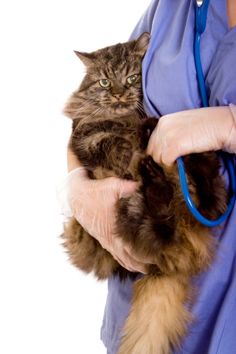 |
Intestinal Worms
Different kinds of worms need different kind of wormers, so always use the wormer your vet recommends. So if you suspect your cat has worms, take it to the vet who can see which worm is in question by using a microscope. (Usually the eggs can be seen in microscopic study). Only the round- and tapeworms are visible to the eye.
When dealing with intestinal worms, the cat should be kept on the quiet, bland diet, and the right wormer be given to it. This wormer may need to be taken repeatedly, so that it has time to kill the worm in all its stages (there may remain eggs in your cats body that need more doses of the wormer).
Empirical deworming is actually recommended even if the feces show no signs of worms. This is because they do not always show up in fecal examination.
Diarrhea caused by medication
As antibiotics (both oral and injected) kill the normal, good bacteria of the intestines, they may cause diarrhea. You may handle the situation by giving your cat yoghurt with active cultures (our cats just love this kind of yoghurt, but interestingly enough are not interested in yoghurt that has no active cultures.)
Bacterial gel pastes may also help.
Of course decreasing the antibiotic dosage may help, or even changing the antibiotic completely, if the old one causes severe problems. You could also ask your vet if giving the prescribed antibiotic in smaller amounts but in more frequent doses might help.
Just remember that if there has been blood in your cat’s feces, it may be a sign that its intestine has been damaged, and without the antibiotics bacteria could get into the bloodstream and cause severe trouble (like septicemia). So do not take your cat off the antibiotics unless your vet tells you to, even if it means cleaning up the mess for a longer time.
And then there is sulfa medication. Sulfa interferes with the absorption of folic acid into bacterial cell walls without affecting the normal cells. This way the sulfa medicine stops the bacteria from multiplying. Sulfas can cause crystals to form in urine, so you should take care the cat drinks a lot. Sulfas can also cause anemia, dryness of the eyes, fever, kidney and joint damage, loss of appetite and rash. Doesn’t sound much fun, but sometimes the bacterial infection is so severe sulfa needs to be taken.
Obstruction in intestines may require surgery.
Temperature
Normally a cat’s temperature is 101.5 F / 38.6 C. In cases of severe diarrhea the temperature usually drops.. In these cases the cat needs to be warmed. In rarer case the cat may get fever, and then, of course, it need cooling, maybe with the help of medication.
Viral Infections (FeLV, FIV, Panleukopenia, rotavirus, coronavirus)
These are highly contagious viruses. When the infection causes fever, vomiting, diarrhea and loss of appetite, the cat is treated with fluids, antibiotics and other medication.
Home Remedies
as Cat Diarrhea Treatment
|
There are some home remedies people like to use as cat diarrhea treatment. Check your vet first if these are safe to give to your cat. Homeopathic and natural substances are used to soothe the tummy. DGL (de-glycyrrhizinated licorice) increases the blood flow of the intestinal lining and reduces muscle spasms. |
Digestive enzymes are sometimes necessary, as commercial pet foods often lack these. Yet they are necessary for digestion. If your cat is on a raw-food diet, it may need extra digestive enzymes. They enhance feed efficiency and are anti-inflammatory.
L-Glutamine supports the function of the cells that line the intestinal tract. You can buy it at health food stores. Normally the body makes all the glutamine it needs from high-protein foods (like meat or fish). Stress may lower the glutamine levels. Stress on the intestinal cells (usually the chronic inflammatory bowel disease) can increase your cat’s need for glutamine.
Montmorrilonite clay has been used to detox the cat.
Myrrh and mullein soothe pain and discomfort.
N-acetyl glugosamine supports the glycoprotein synthesis, and this helps the inflamed bowel to calm down and heal. This of course helps in cat diarrhea treatment.
Natrum muraticum is a homeopathic remedy which has also been used.
Organic catnip may also help your cat.
Peony is also antibacterial and analgesic, reduces inflammation and relaxes spasms.
Plantain (Plantagomjor), Lady’s Mantle (Alchemilla vulgaris), Podophyllum 6C and Sulphur are also used as cat diarrhea treatment.
Slippery elm bark powder soothes and protects the mucus membranes of the gastrointestinal tract. It is also high in fiber and nutrients and alleviated nausea. You can buy this at the health food stores. You can add it to your cat’s food or water (small amounts) as cat diarrhea treatment.
Yeast (saccharomyces boulardi) is a probiotic . It is especially helpful when dealing with symptoms that are related to colitis, inflammatory bowel disease and irritable bowel syndrome. Also if the diarrhea is caused by antibiotics, yeast may ease the trouble.
Interestingly enough a little cheese may help your cat’s feces to be more solid. My own cat Rolli has a delicate tummy. To my other cats I have been giving a little yoghurt, but Rolli doesn’t eat it. I though cheese might have the same beneficial bacteria, so I began giving some to him every day. And his feces certainly became more or less normal.
And like mentioned before already, active culture yoghurt is a probiotic. Lactobacillus and acidophilus bacteria are good for the digestive system. Not all yoghurts have these, so do a little studying before buying yoghurt to your cat. And of course buy the unsweetened, natural yoghurt.
Probiotics in general are good. They replace the good bacteria – for example when medication has destroyed it in the intestine. When taken orally they help to get rid of the pathogen microbes. You can get probiotics both in powder and paste form.
Cooked and canned pumpkin is also beneficial to the cat. It has fiber matrix that helps to make the feces more solid and it slows down the gut peristalsis. It contains vitamins and antioxidants. Notice this is not the same as pumpkin pie filling - that is not good for cats. The taste of pumpkin is usually acceptable to cats.
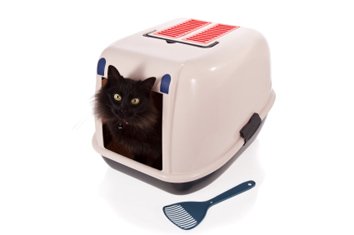
Disclaimer: This website is not intended to replace professional consultation, diagnosis, or treatment by a licensed veterinarian. If you require any veterinary related advice, contact your veterinarian promptly. Information at cat-breeds-info.com is exclusively of a general reference nature. Do not disregard veterinary advice or delay treatment as a result of accessing information at this site.

Back to Homepage from Cat Diarrhea Treatment
Back to Cat Diarrhea Article from Cat Diarrhea Treatment
Back to Illnesses Related to Cat Diarrhea
Leena's Books
Tutankhamun
|
This book travels with the King Tut - Treasures of the Golden Pharaoh exhibition on his world tour of ten cities from March 2018 onwards |
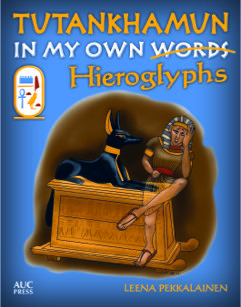 |
|
Tutankhamun: In My Own Hieroglyphs tells the story, for older children, of the life and afterlife of the famous young pharaoh in his own words. Tutankhamun tells us about the trouble he got into as a child in Akhenaten's palace in the new city of Akhetaten, and how he became a boy pharaoh. As we learn, his life changed a lot when he died as a teenager, and long years of boredom started in his tomb with only his pet monkey Fingers and his treasure for company. He did meet some of the Egyptian gods, of course, and had fun scaring off tomb robbers, but it was mostly rather dull. Then one day, some new and strange people, including a Mr. Howard Carter, arrived and began to take all the treasures out of his royal tomb. Fortunately, through the eyes of his beautiful golden mask, Tutankhamun, could have fun again traveling around the world |
Mr Mummific
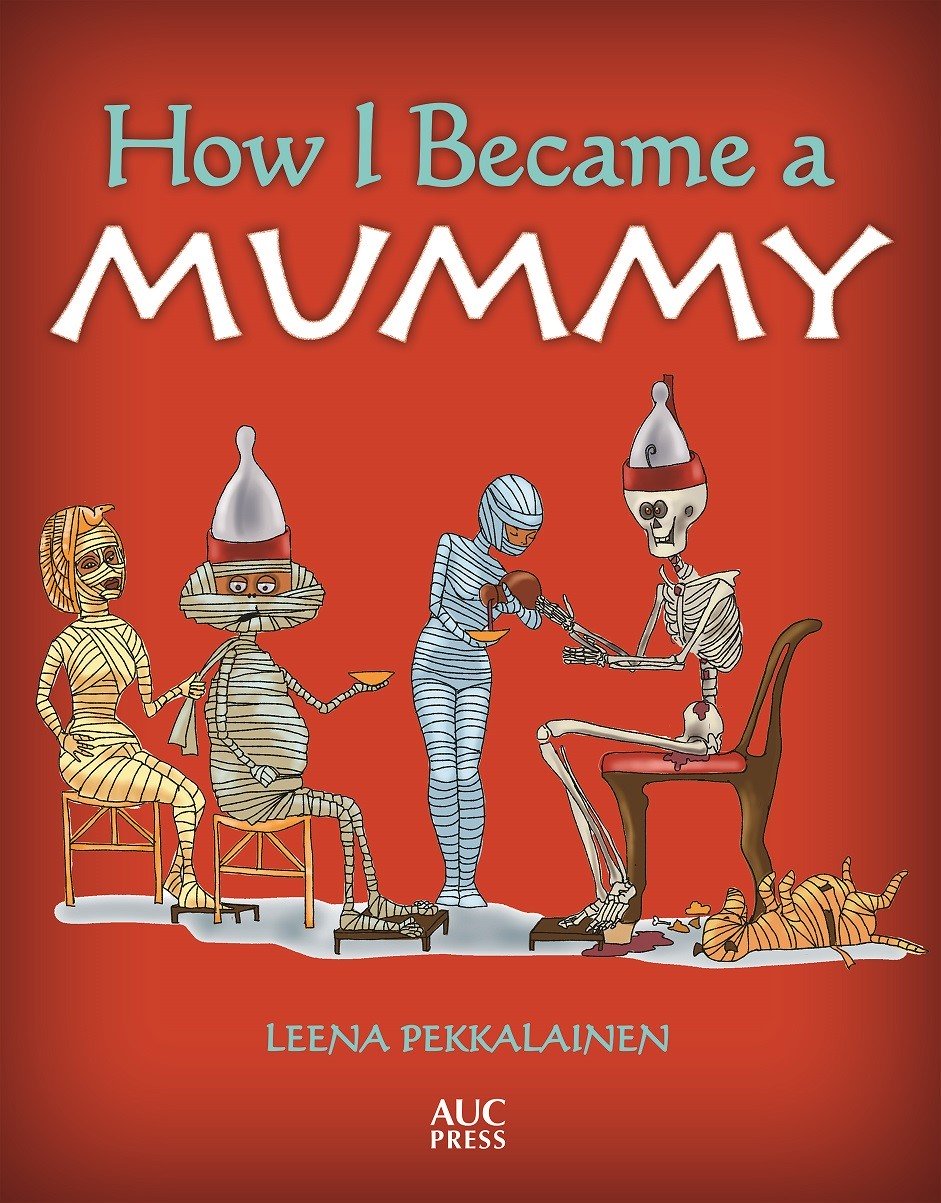
|
An ancient friend of mine, Mr Mummific dictated a book about how he became a mummy - and I was his scribe and artist. The book is available at Amazon.com and Amazon.co.uk On my other website www.ancientagypt101.com he continues his stories about life in ancient Egypt. |
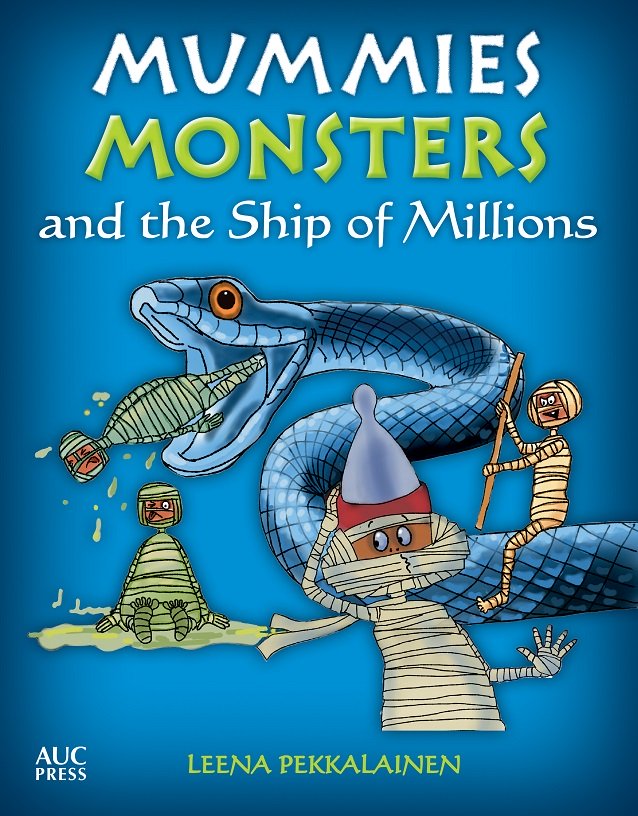
|
Another hilarious adventure for children with Mr Mummific, the mummy with attitude. He now tells the story of his mishaps, misunderstandings and misadventures as he leaves his tomb through the False Door to embark on the complicated and dangerous journey to the Afterlife aboard the magnificent Ship of Millions. Find the book at Amazon.com and Amazon.co.uk |
The Nephilim Quest Series
The first book in an epic fantasy series based on human mythology. The search for the mythical Watchers, the angels who fathered the Nephilim, the half-angels. A story that moves on three levels - our times, ancient Greece and ancient Egypt.
Preview Nephlim Quest 1: Shadowhunter online
***
My Author Website at leenasbooks.com
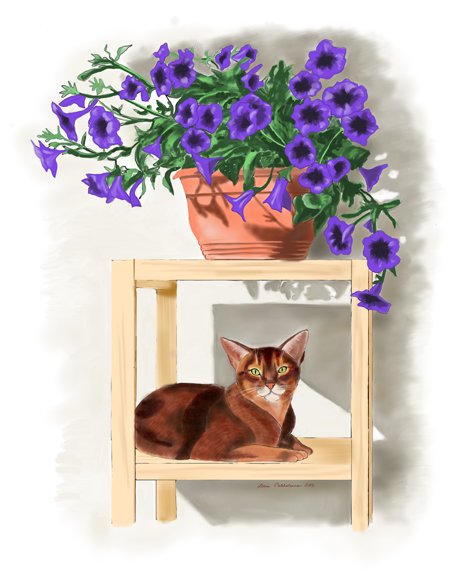
If you are looking for demanding coloring, check:
Online Coloring Books Magazine - No.1
It shows you step by step how to color this pretty Abyssinian cat with flowers. Each page has a color sample, and all the techniques are explained.

